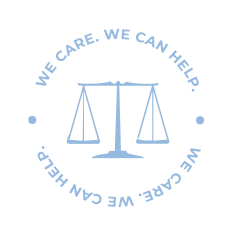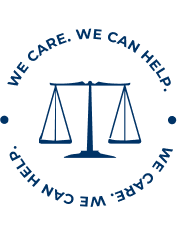A dog bite is no simple matter. An animal attack can be traumatic enough to change one’s life. With a dog bite taking place every 75 seconds in the United States, knowing what to do in the moments immediately following an attack can make the aftermath of a very scary situation a little less stressful.
We’ve created a step-by-step guide so you’ll know what to do if you’re bitten by a dog.
1.Seek medical attention immediately.
You want to have a medical professional examine the dog bite right away to rule out infection and to determine if stitches are needed. Whether the dog bite is big or small, you run the risk of infection even if you don’t think you will require stitches. According to the Center for Disease Control (CDC), out of the 4.5 million dog bites that occur in the United States annually, 900,000 of those bites become infected.
2. Report the incident.
The American Red Cross advises victims who have been bitten by an unknown dog should not try to stop, catch or hold the animal. Instead, contact animal control right away so they can attempt to capture the dog. Immediately report the incident to the police and obtain a copy of the police report.
3. Identify witnesses.
Gather the name and contact information of the dog owner, if possible, but do not engage in any discussions regarding the incident. If you get a call from the owner’s insurance company, do not speak to them. Take down the names, phone numbers, and addresses of anyone who saw the attack happen. If any of the witnesses’ mention this is not the first time that particular dog has attacked, they will be key in determining negligence on the owner’s behalf.
4. Document with photographs
Photograph the dog that caused your injuries along with all visible injuries the canine caused. You also want to take pictures of the location where the attack took place. Nothing helps prove the extent of what you went through like photographs from the beginning and throughout the entire healing process.
5. Consult an experienced Dog Bite Attorney
It is well known that insurance companies are trained to give low ball settlement offers that can come across as offensive to someone who has lost so much not only financially, but physically and mentally as well. You will want to contact a Dog Bite Attorney who has vast experience handling these type of cases to be able to navigate city, state and federal dog bite laws and recover the maximum amount of compensation on your behalf.
According to the Insurance Information Institute, one-third of all homeowner’s insurance liability claims (in dollars) result from dog bites or dog-related injuries. The insurance industry paid more than $570 million in dog bite-related claims in 2015. The average cost per claim was $37,214.
Dog bite victims may seek compensation for the following:
- Pain and suffering
- Past and future medical expenses
- Cost of rehabilitation or reconstructive surgery
- Lost income and diminished earning capacity
- Other losses related to the injury
Dog bite infection risk
All animal bites can transmit bacteria and cause infection. , as bacteria in a dog’s mouth and saliva can enter the wound after making contact with your skin. As bacteria multiply, the body’s immune response causes common symptoms of infection including swelling and inflammation. Dog bite infections are very serious and can be fatal if left untreated.
Tetanus is a serious bacterial disease affecting the nervous system and is a common result of puncture wounds.
Rabies is a viral illness that spreads from the saliva of an infected animal. Exposure to a rabid dog does not always result in rabies. Rabies can be prevented if treatment is initiated promptly following a rabies exposure. If a person develops clinical signs of rabies, and rabies exposure was not treated, the diseased almost always results in death.
What are the signs of dog bite infections?
A dog bite that does not break the skin is not at risk of infection, while scrapes and scratches that graze the skin’s surface have a slight chance of infection. Lacerations have a higher risk of infection, with puncture wounds having the highest risk of infection. Common signs of infection include:
- Pus or fluid oozing from the wound
- Loss of sensation around the bite
- Red streaks near the bite
- Swollen lymph nodes
- Fever or chills
- Night sweats
- Breathing difficulties
How to clean a dog bite wound
Although you’ll need professional medical attention the same day while waiting for medical professionals to arrive, or before going to see a primary doctor, you should clean and sterilize your wound to fight the risks of infection.
Superficial wounds. A superficial wound is a scrape or gash. Clean the wound thoroughly with running water first, then clean it with hydrogen peroxide or isopropyl alcohol. Apply a topical antibiotic and cover it with a sterile bandage.
Puncture wounds. The flow of blood out of a wound helps cleanse it. As long as blood is not gushing out forcefully and your wound is not on your head or neck, press on the wound gently to help flush out as much bacteria as possible.
Once it has bled for about five minutes, cleanse the wound by rinsing it under water with mild soap. Slow the bleeding with a clean cloth and apply an over-the-counter antibiotic cream. Do not use hydrogen peroxide, rubbing alcohol, or iodine for puncture wounds as it can slow healing. Wrap the wound with a sterile bandage until you see your doctor.
Don’t be left wondering what to do if you’re bitten by a dog. Call The Carlson Law Firm
If a dog attacked you or a loved one don’t hesitate to contact The Carlson Law Firm. We have extensive experience in dog bite claims and have been assisting dog bite victims for over 40 years. Let us deal with the insurance company while you focus on a healthy recovery. We are available 24 hours a day, seven days a week. We care, we can help.
Contact us today for a free, no-obligation consultation. Hablamos español.





